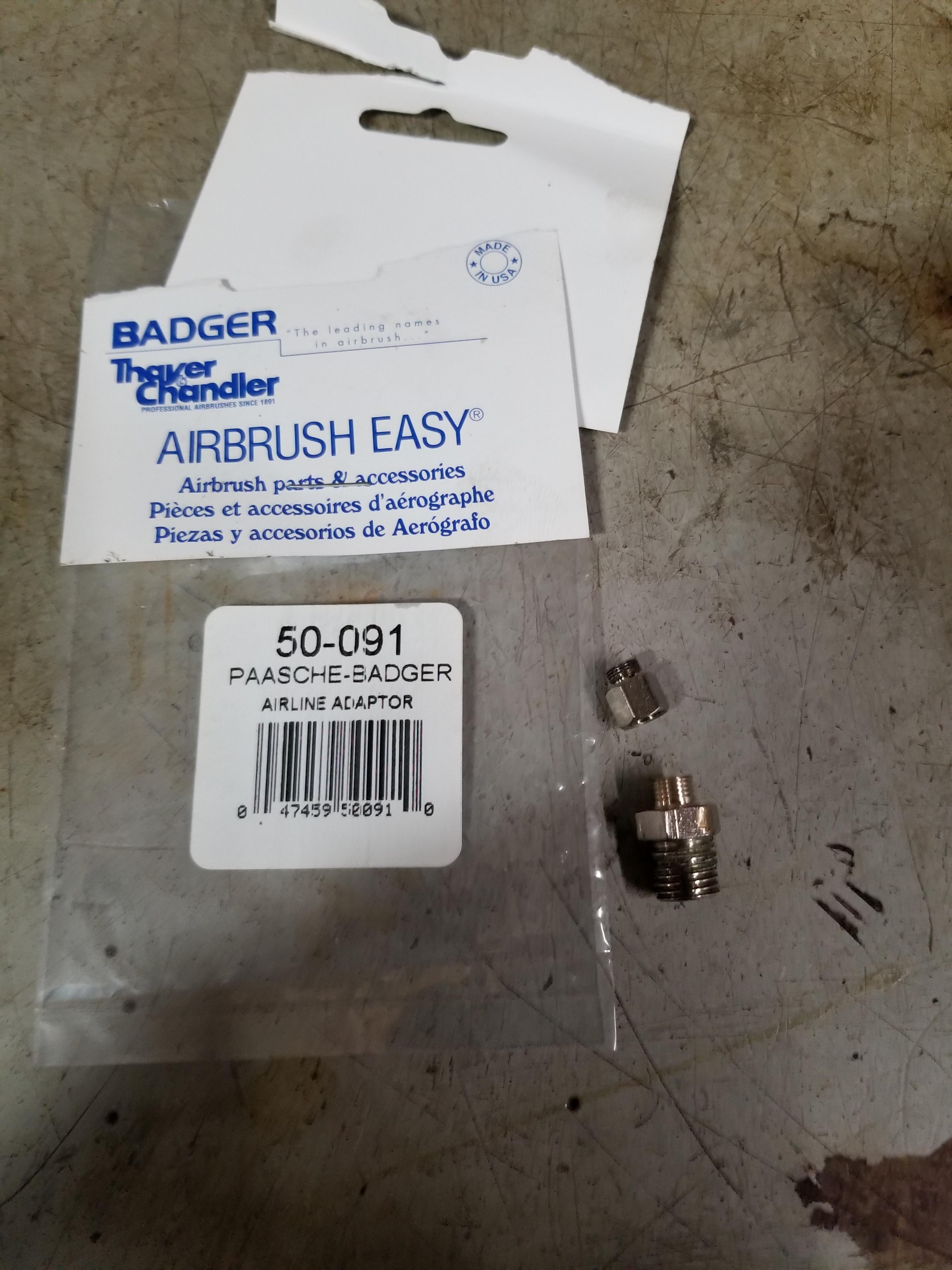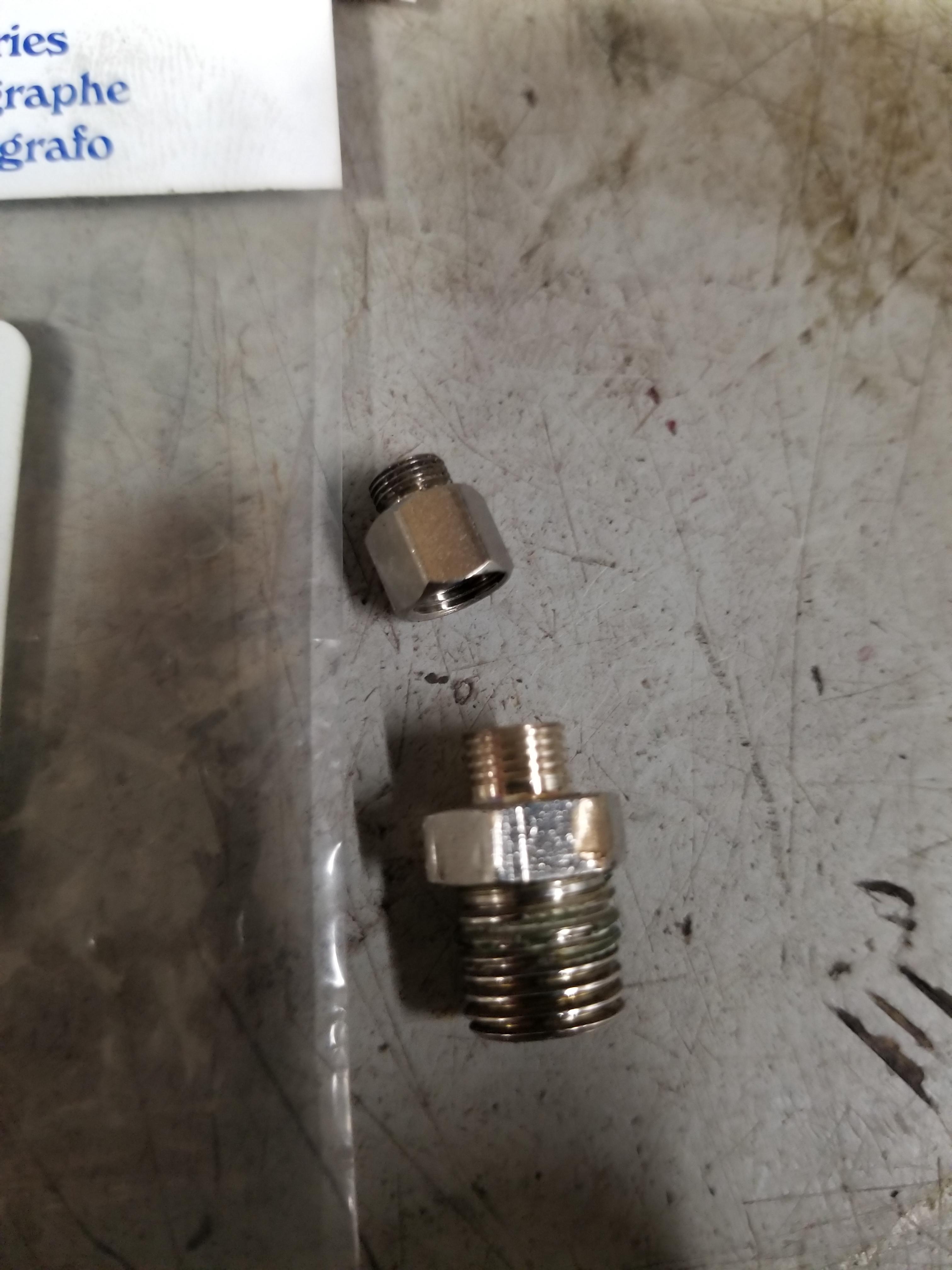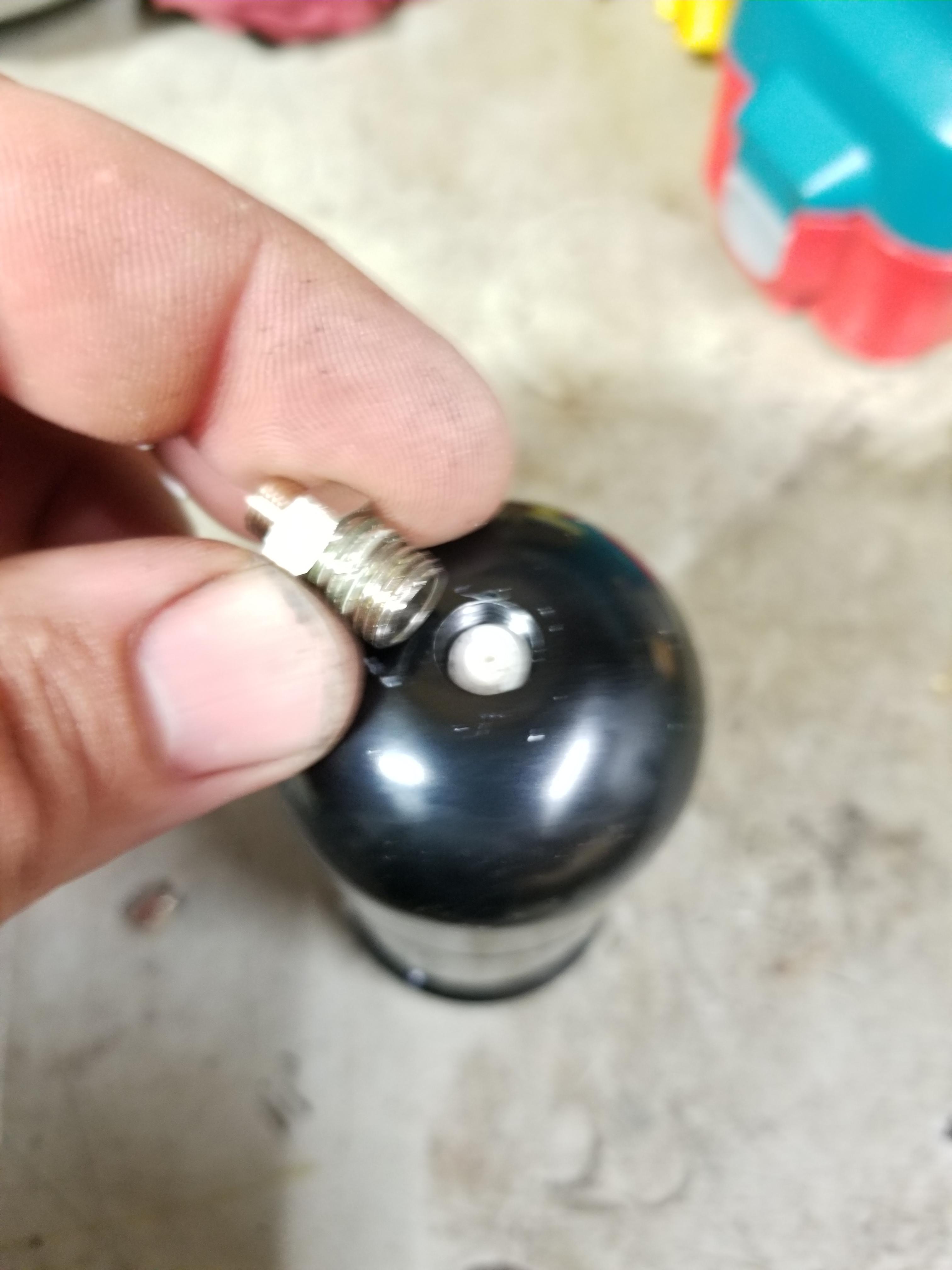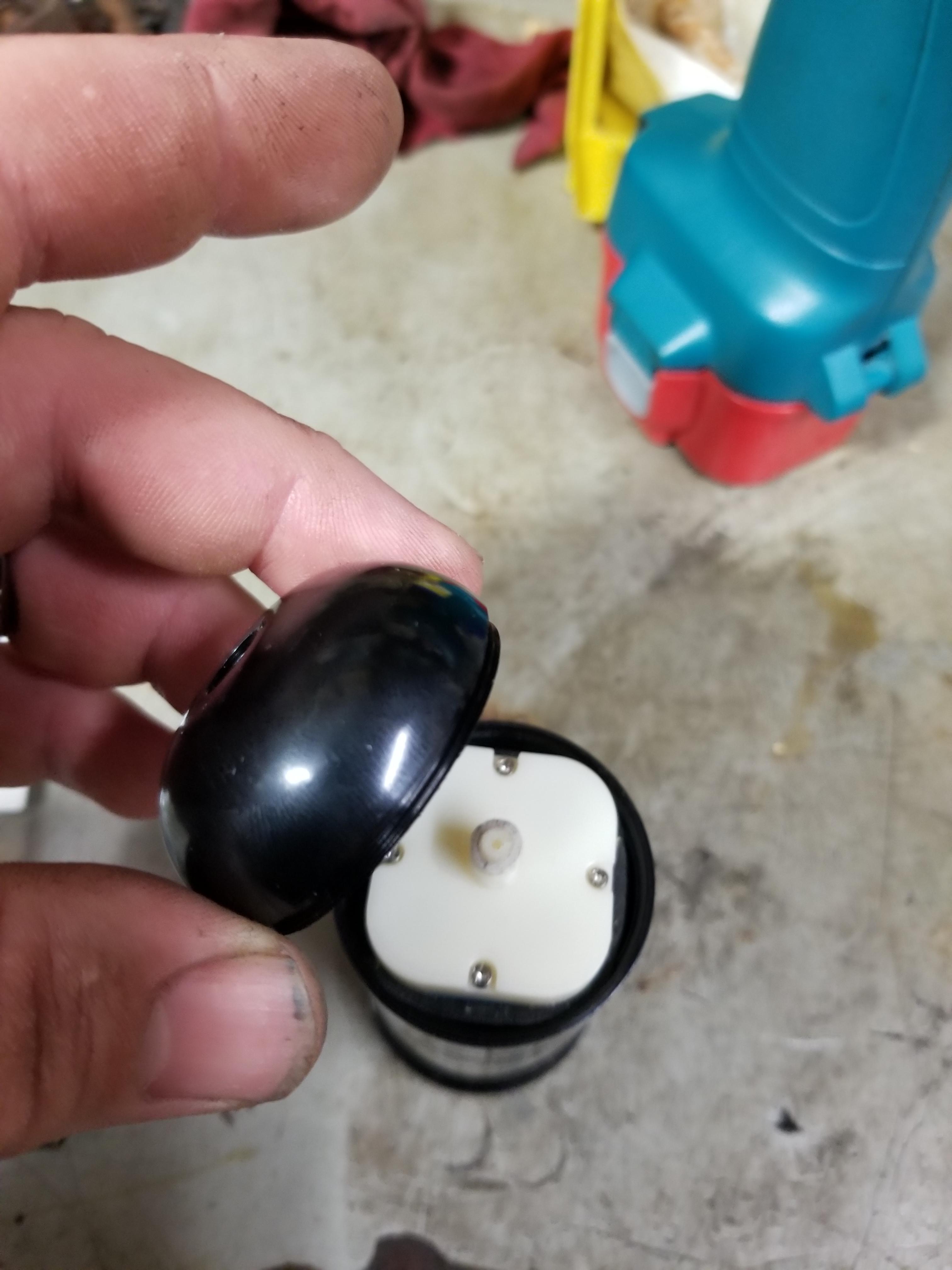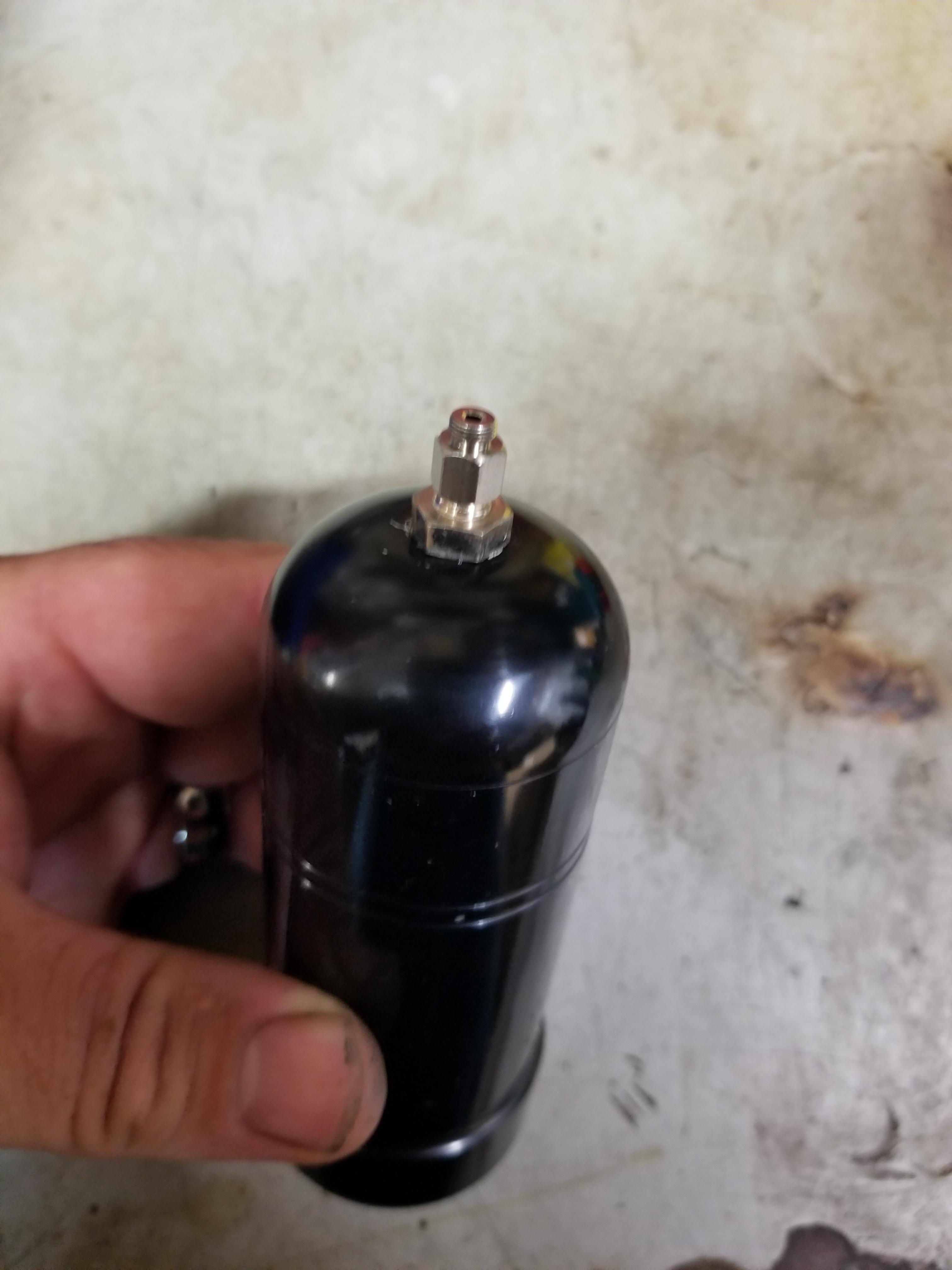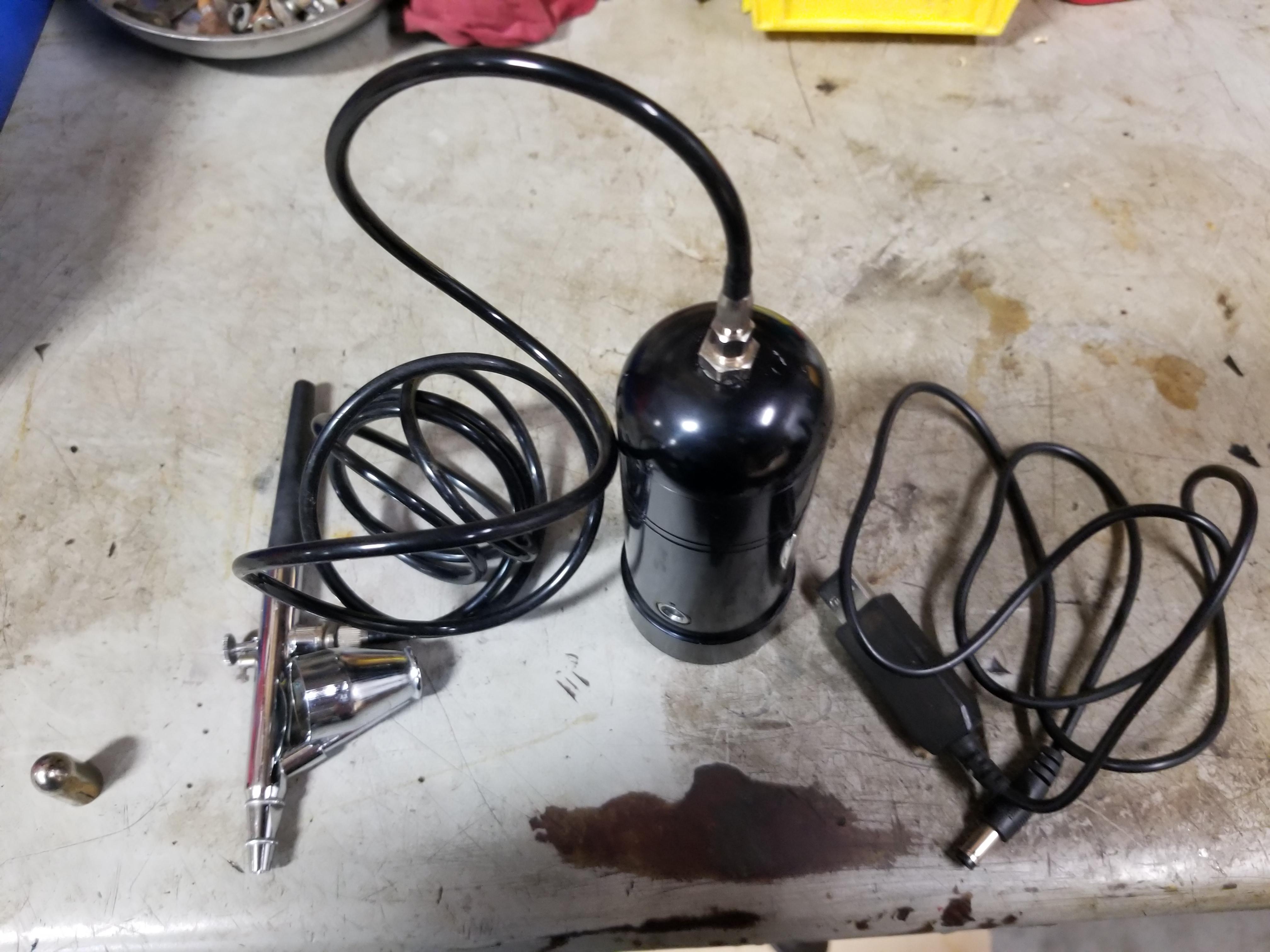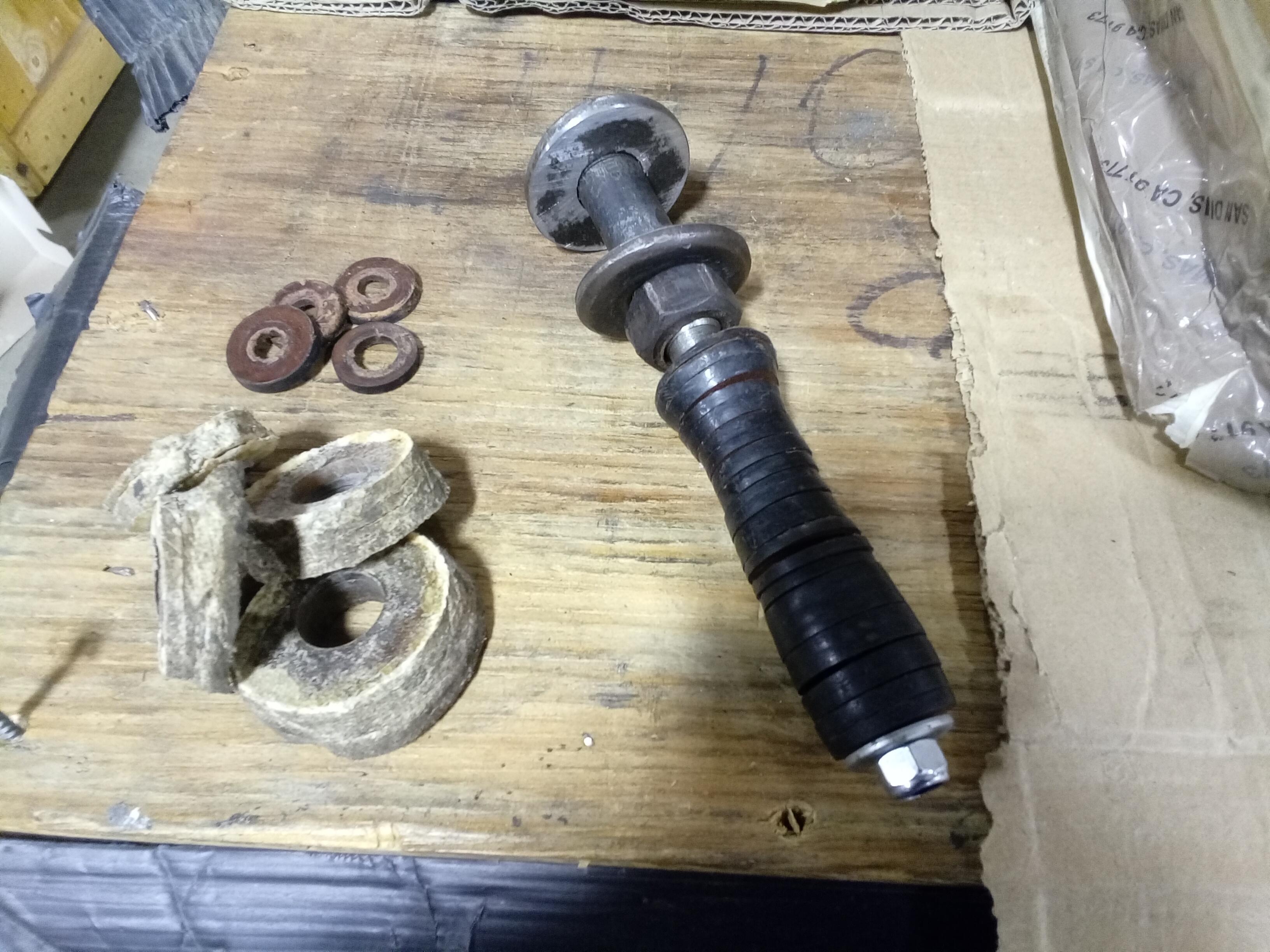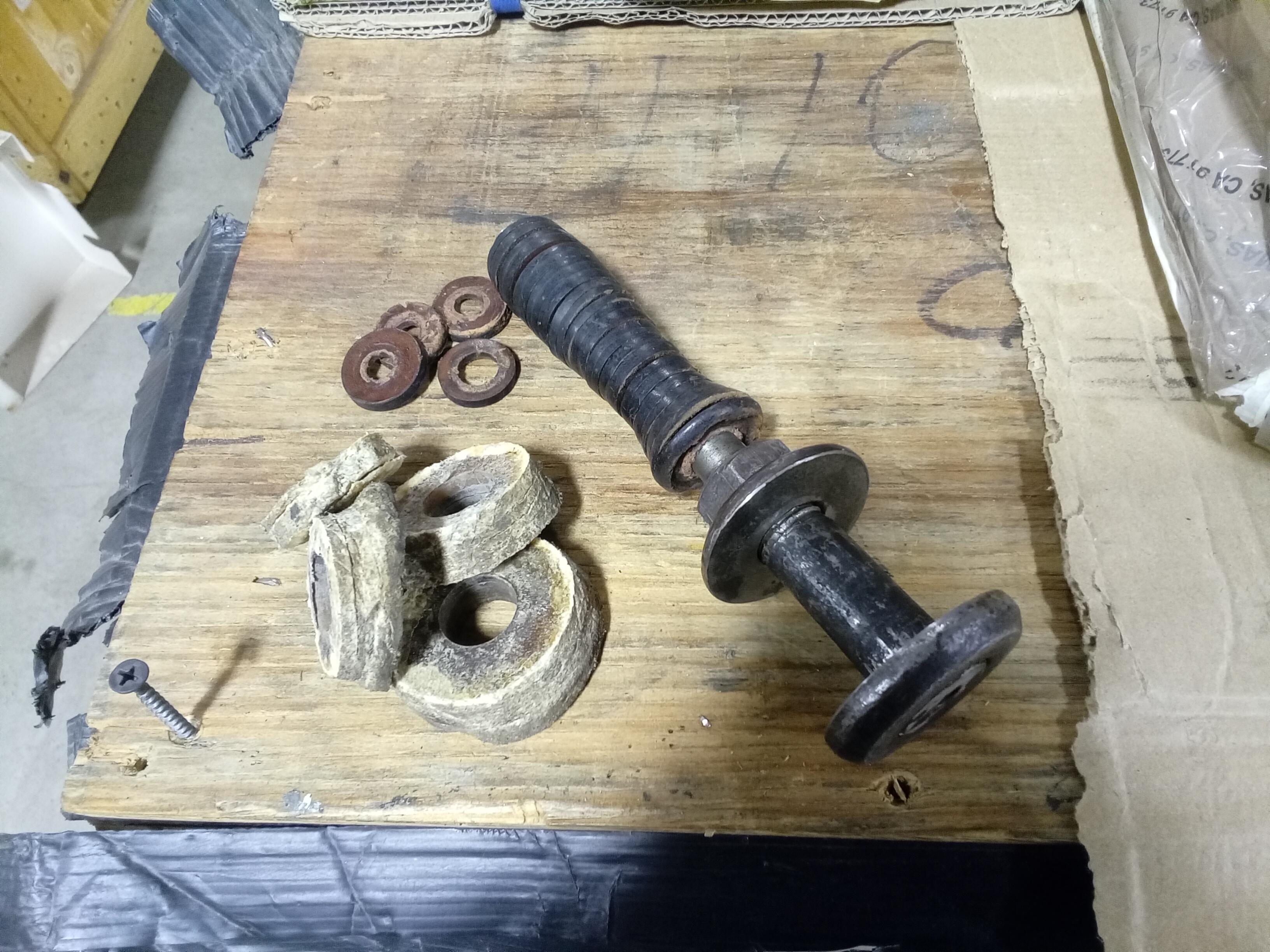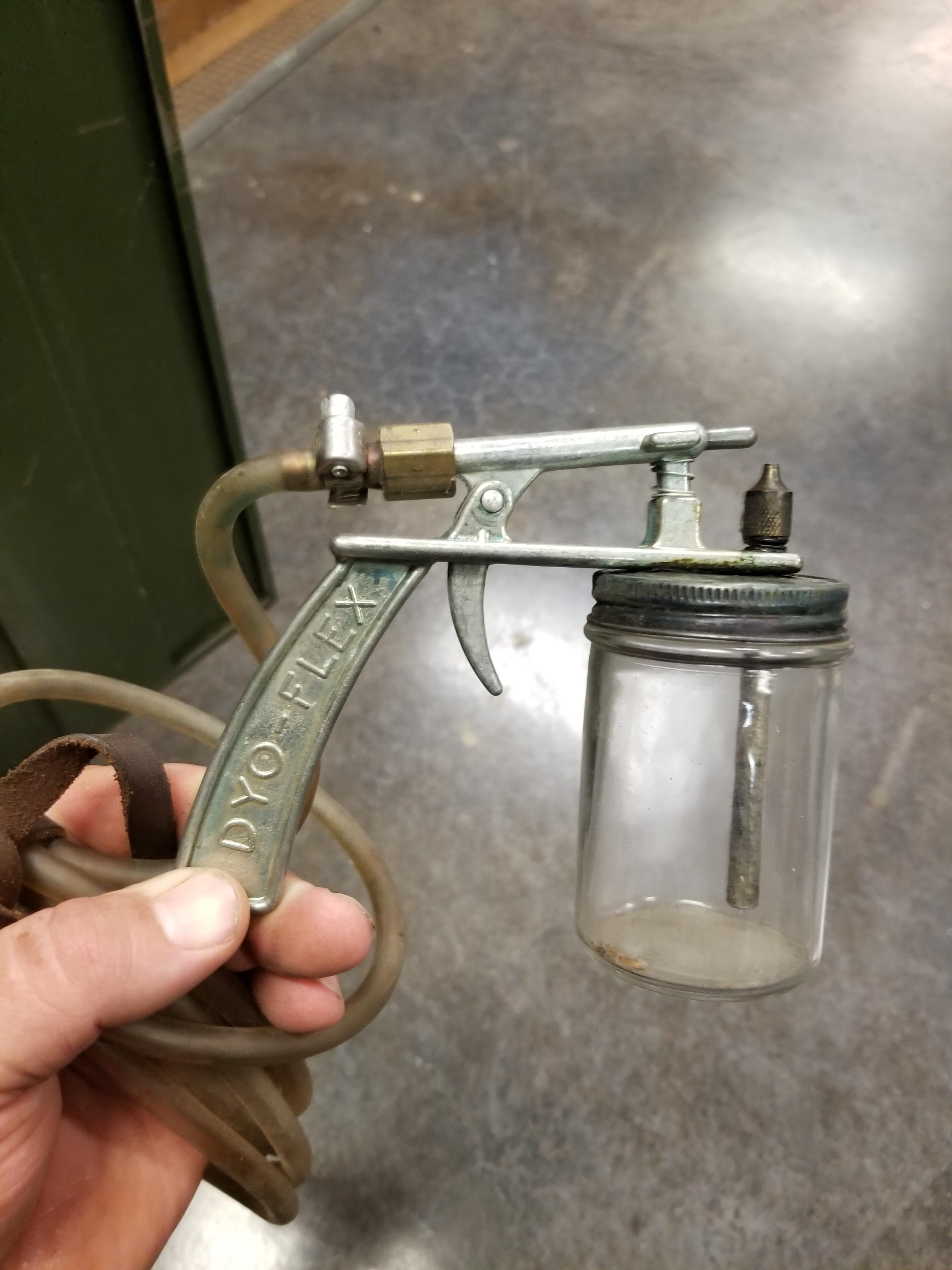-
Posts
67 -
Joined
-
Last visited
Profile Information
-
Location
Conroe, TX
-
Interests
History, Machinery, Woodwork, Leatherworking, Machining, Classic Cars
LW Info
-
Leatherwork Specialty
Machinery Repair
-
Interested in learning about
Saddle and Harness work
-
How did you find leatherworker.net?
Google
Recent Profile Visitors
The recent visitors block is disabled and is not being shown to other users.
mbnaegle's Achievements

Member (2/4)
-

Landis 3 and landis 16 needles and awls.
mbnaegle replied to speedybri's topic in Leather Sewing Machines
Yep, same needle/awl system. Landis needles and awls are harder to find. If you can't find them, you can convert it to use Campbell needles and awls which have a slightly larger shank diameter. The Landis needle bar collet will flex enough to take the Campbell needle, but the awl bar would need to be taken out of the machine and have someone with a lathe ream out the hole for the awl. The size numbers between the Landis and Campbell systems are different, but in either case your thread size dictates what size needle you use, and your awl should be one size larger than the needle. -
A few generations before my time (before 1830 that is) my Naegle ancestors were wine makers. They emigrated to the US from Alberweiler Bavaria, which to my understanding is an area that's bounced around from German rule to Swiss rule and back for centuries. As far back as I've been able to go (1500's?) the Naegle's were there and made wine like the rest of the village and their fathers before them. The old village is still there and they're still making wine. I Google translated the village website a while back, and I think I remember finding a page that listed the families/vineyards in the area and there was at least one with a similar spelling of Naegle that might be a distant cousin, so one day I want to go back and look them up. Now after 1830, not long after arriving in the states my great great grandfather John ran away from home and joined the Church of Jesus Christ of Latter Day Saints (Mormons!) who teach abstinence from alcohol. At that time, they still used wine for the sacrament and grandpa John made wine for that purpose and he sold some too, but the church eventually moved on to just using water for the sacrament and John moved on to other endeavors like growing vegetables, livestock, etc. My family is still part of the LDS church and I don't have any desire to drink wine, but I like learning about the process and feel a bit of kinship to it. A couple years ago I started some vines in my back yard and have gotten into making grape jams every year. I've thought about canning grape juice too, but I still need to learn how to keep it from fermenting but still getting it to store well. Maybe next year... Around here in south Texas the Muscadine varieties do really well. They have a tougher skin so while they're not a good table grape, but they can process down into other things just fine and to my unrefined pallet they taste a bit like a concord. I've also got a couple or hybrid vines going that haven't put out much yet, but should put out red table grapes eventually.
-
I think the part # for the table plate is 202259, and the hook end on the machine is #210844. Same hinges are used on the 107W zig-zag machines. Googling those numbers pulls up a number of sources, and I think you can still get them from Superior.
-
They use the Schmetz 331LR needles, which at one point I think were discontinued, but looking online it appears some suppliers show inventory so maybe they started making them again? Landis #1 Needles Parts I highly doubt will be available, other than finding good used parts or making your own. If anyone were to have them, check with Eli Schlabach at Landis Machine Co. in Arthur, IL (217-543-3464). He's mainly in Landis #3 and Landis #16 machines, but he might have something.
-

New Tool Idea - Large Leather Shears - Should I make these for sale?
mbnaegle replied to Stagesmith's topic in Leather Tools
Good job on those old tailor's shears! I agree they are worth fixing if you can. For sure there would be a market, but I think the key will be effective communication. In just about any hand-tool driven craft or trade, there's always a big range between guys who will do everything with a plastic butter knife, and guys who think you need a million special tools, each one slightly different for slightly different demands (and some only used on Tuesdays). Both ends of the spectrum (and every point in between) has guys who feel clueless and would believe anything you tell them, and guys who will die before giving up their one true way of doing things, and honestly every one of them is "right" if they can do the work they do. I think the trick when it comes to selling any tool in that environment is to clearly explain what and why your product is and how it can help, but avoid claims of authority unless you can back it up with your own AND others experience, while also leaving room for other perspectives. You'll always have guys that think you are wrong or trying to rob them. I think good products should sell themselves and good salesmen just provide information and let you make your own decisions. For sure you need to learn from the masters before you, but the water gets muddy when that master is also trying to sell you things, no mater how helpful or necessary they are. All that said, my take is that there's no "one-tool" to do it all, but it helps having redundancy and overlap in tools. I think good craftsmen have preferred methods and methods that they turn to when necessary, AND they're always learning and looking for other ways to do things better. When cutting thick and heavy leather, shears are not the first thing I reach for, but they can be really helpful when making adjustments to things after assembly or away from the workbench, like cutting flat belting for powering machinery like they were designed for. I think I've got a pair like in the first picture and they come in handy. In this case, the tool isn't "new" but is less common. You shouldn't have to worry about promoting your design as much as bringing the proven concept to a broader market, while also toting that they are hand crafted so the level of quality can be expected to be a little higher than factory made pieces. -
Here's what I ended up with on the cordless compressor. @dikmanit sounds like your compressor is like mine. It had some kind of white thread locker material as well, but I was able to twist it loose. One mine, the top shell of the compressor unthreads, so if you need to put some heat on the fitting, you can do so without effecting the plastic parts inside. One mine, both ends of the top fitting were odd-ball, so I bought a Badger (M5) male to Paasche female adapter, as the Paasche thread was a little smaller than what was on top of the compressor fitting. I used my lathe to turn down the compressor fittings threads and re-thread them to match the Paasche adapter (about .256"x40tpi). It's not the tightest fit, but the rubber o-ring that comes with the adapter sealed it. The compressor fitting's inside diameter was a little too big to cut it all the way down to a Badger thread and avoid the adapter. It works! Time to pass it on to the kiddo.
-
Not sure if anything is available off the shelf, but bear in mind that Stimpson didn't sell hardware generically. In other words, you couldn't just buy dies and than fit them to any machine. They had different die systems for different machines, and each application had a different stroke, arm configuration, pocket mechanism, etc. 3/8" diameter hardware is more common though. At least if it was for the regular C-1 series rivet machines and for the 489 and similar series grommet machines (which were the foot and electric powered versions of that hand operated press). It wouldn't be a hard job for someone with a metal lathe to make an adapter to at least get the hardware to fit in the hole. You'll also need to consider how you'll hold your fasteners in place. Most of these machines relied on special pockets to do so which the driver would push the rivet or grommet through and they are really not meant to have the hardware swapped out frequently. You'd set it up for one job and a different machine/press for another job. Some drivers have a rubber sleeve or a magnet to help hold the fastener in place, but you'll need to consider it when choosing your hardware. Because it's a hand operated press, you only have one hand to hold the material and fastener in place as you set it. Grommets are often pre-punched, so you can set the fastener in the hole and then crimp it without any pockets, which is likely how that press was made to work, so I think it would do better sticking with grommets.
-
A couple of updates: I found a 2nd-hand handheld cordless compressor that seems to work really well and was missing the airbrush top end, but the thread on top of the compressor is some odd-ball thing that I can't find any adapters for or even information on what the thread size is (likely something proprietary), so I'm going to get crafty on the lathe and either make a fitting from scratch, or modify a couple to bridge it all together (pictures to come). I'm going to give it to my daughter to use and my intent is to make it work with the M5 Badger style hose connections, so it'll be portable, but less weight in the hand. She's mainly into drawing and painting right now. It would be cheaper and way easier to buy a complete working unit, but there is the sentiment factor that she can use one of her grandpa's old airbrush's. He had four of the Badger 150 clones and at least 3 work (I'm keeping his genuine Badger 150's with his leather tools). One or two of the clones are going to go to my nephew who's been getting into models lately. For his set-up I got a new 110v compressor as he's putting together a workbench/model station for his room. Then with the Binks Wren size "A" that I was trying to find a piece for, I got a good deal on a complete size "B" gun that looks like it's never been used. My current "B" works well, but between the two of them I'll use one for parts as they all use the same trigger/air flow pieces. The only parts that change between the sizes is the main body (stamped differently) and the fluid control assembly on the front. Now I just need to find a "C" size (heavy flow) and my flock of Wren's will be complete.
-
Nice! My dad had a 16 when he was doing saddle and harness work and really liked it. Eli's a good man.
-
DIY'ing it might be a good way to go. I found this thread *here* that has some detailed process. Doesn't seem difficult or high skill requirement. Just takes time. One thing I might do differently is those guys used nails to help hold the layers together, and in time as it wears down they'll eventually be sticking out the side. I've got a hand crank book press the should compress it together good enough that the nails aren't necessary.
-
-
I've got several rawhide mauls an various sizes, and one of the little ones was worn down considerably so my Dad took apart to rebuild before he passed and I'd like to get it finished. I don't think it's an Osborne, as it has a handle made of stacked leather rings and the end cap washer was rivetted in place. Given the wear and beating it had, I went ahead and threaded the end to take a nut so it'll be easier to service in the future. I'm having some trouble finding the right rawhide refill for it though. The refill should have a 3/4" ID hole, and be about 1 1/2" or 1 5/8" tall. Diameter could be anything over 2". I think at one point the plan was to make a plastic head for it, but rawhide just seems a better choice, or hardwood if it gets down to it. Plastic works great for stuff, but I'd rather keep the old tools going as they were intended and make a whole new maul if I wanted a plastic one. Looking at Osborne's site, I don't see all the dimensions listed. It looks like the 393-2 would fit, being 1 5/8" long and 2 3/4" round, but there's no hole dimension listed. Can anyone confirm if it's 3/4"? We have a few refills on the shelf but they're all bigger and I'd prefer to avoid adding bushings and keep this maul appropriately sized. I know I could just call Osborne too, but I'm also wondering if there are other rawhide suppliers out there as I have an unhealthy tendency of fixing up obsolete tools and utilizing dated materials.
-

Sewing machine for true moccasin footwear
mbnaegle replied to X24's topic in Leather Sewing Machines
Not sure if this is what you are after as I have I've no experience in shoe or moccasin making, BUT something maybe of interest is that in the 1950's there was an Indian moccasin fad big enough that the American Stay Co. (later sold to Randall) developed a moccasin seam sewing attachment for the Union Lockstitch machine (Needle and Awl Harness stitcher). To mount it, the machine's face plate and the awl bar had to have some extra features machined into them, but most every machine made from the 1950's to the 1990's had those features ready to use. Essentially what this attachment does is replaces the up-down pressure foot motion with a left right pressure, pushing the material into the channel of a special needle plate. The pressure bar (LS-801) could be inserted into the shoe, allowing the moccasin's upper seam to be sewn. We haven't sold parts for these in decades, but still have it all on the shelf and It's been on my to-do list to set up a machine with one and try it out. -
Might depend on what kind of air-brush you were using, but more so what you are doing. There are lots of different kinds that work different ways. Some take more skill and provide better detail control, while others are simpler. For basic painting where I'm not getting too "artistic", I'm a fan of the Binks Wren airbrushes (expensive new, but cheap used), though that general design concept is offered by other makes as well. It's a externally mixing gun, meaning it's like an air gun with a tube in front of the nozzles that siphons paint up out of the pot, making for easier cleanup. It's also a single action button, where pressing the button only activates the air. Other airbrushes out there like my Badger 150's are double-action, where pressing the button activates the air, but pulling back on the button gauges how much air is coming out, which can be tricky to get the hang of. All of mine are syphon feed that need air to pull the paint/dye up a tube, while others are side or top gravity feed. I think a spray bottle would be hard to gage when to start and when to stop pumping, how to fade it, etc. but I've never tried using one for paint or dye. I think they would be hard to clean, so it ends up being a disposable. Air-powered spray guns have the advantage of providing consistent pressure for as long as you hold the button or trigger. If you're looking for simplicity and need to do volume, these old dye sprayers are about as simple as they come. Not sure where to buy them these days, but it gives you some ideas. This one I recently restored, (full of dry dye and the lid was rusted out). No moving parts and minimal cleaning needed. It uses very little air pressure, which bleeds out a hole in the top of the handle. When you cover that hole with you're thumb, it redirects the air to spray out the front. Not sure who made it originally. Also have a couple of these old Dyo-Flex guns. The air is always spraying out the front and the trigger moves it closer or farer from the syphon nozzle, changing if or how much fluid is spraying.
-
Had some mishaps over the years, always due to being an idiot with a tool or using it without the proper guards. Personally, I don't like trying to make machine's "idiot proof" as it seems that they keep coming up with better idiots, but if something had a guard when it was new, it's better to keep it in place and adjust your job rather than take it off and forget about it. Ultimately, no guard will compensate for someone not keeping their mind on their work or trying to do it faster than is safe. It's better to treat the machine like it would kill you if it could, like a tiger on a chain, not a kitten to play with. I was cutting up some 3x3x3 hardwood blocks a few years back and didn't plan ahead and cut them to length before I sized the height/width on the jointer or planer. Being in a hurry, I made the idiot decision to run the short blocks through the table saw. One bound up and kicked back into my face, making a comical *ploink* noise and I later found it had a dent in the side where it hit the floor AFTER hitting me. It momentarily dislocated my jaw, knocked my safety glasses off my face, vision went blurry for a bit, and I was bleeding pretty good. Got a ride to the hospital and was EXTREAMLY LUCKY that it just skipped off my face doing no bone damage, no bruising, and I only needed 14 stitches and some superglue to get put back together. Also fortunate that the ER guy on duty that day specialized in facial sutures, and he dug some wood shrapnel out of my face. Got a neat scar out of the deal, but better than that I gained more respect for using a table saw correctly and I replaced the missing blade guard. I finished the blocks later (belt sander), which were being cut into some support rests for a tool, and the one with the buzz mark across the side where the blade caught It I kept visible for a personal reminder. Speaking of table saws, long before my time my dad worked with a leather shop that did silver work as well. He was doing some silver work on a mechanical die press and it took the last 1/4" off of one thumb. He went to the hospital but didn't bring the severed bit, so they had to pull the bottom edge of the wound up under the nail (which he said hurt the most). For the longest time, he had one thumb shorter than the other, which made for some fun stories, until one day he cut 1/4" off of the OTHER thumb while using a table saw. This time the doctors didn't want the bit and stitched it up like they had the other thumb, so for many years he kept the severed bit in his desk in a little jar of formaldehyde. He used to say when he was buried he wanted us to burry ALL of him, but when he passed we couldn't find it (I miss him anyway and don't mind if he wants to haunt me). Speaking of thumb's, another time I was making adjustments to a band knife splitter, which required the machine to be opened up but running so I can see how it was moving and make adjustments. While I was sitting and giving it a moment to run, I noticed one of the blade wipers was vibrating. I thought that it was covering the blade and I stuck my thumb on it to see if the vibration would stop, and when I did it slid back letting the blade slice into my thumb about 1/2". The guy I was with wanted to call 911 but after I had a chance sit and to breath through the wooziness, it didn't seem so bad once I taped it up, so I finished my work for the day and went home. When I got there my visiting father-in-law helped me re-dress it and told me 'Nope. You're going to the hospital.' Once there, the nurse messed around with it cleaning it out and by-golly that was x10 worse than when it happened. They recommended stitches but too much time had passed (6 hours), so they would have to cut it back open If I wanted it to leave less of a scar. I was more concerned with infection than cosmetics and they confirmed that I didn't NEED stitches, so they taped it up and gave me some antibiotics. As it healed, I realized I had cut through a nerve as the end of my thumb had lost feeling, but it closed up fine and didn't hurt. After 3 or so years I've got about 90% feeling in the end again. I've gotten nicked by non-moving band knives plenty of times over the years, but I still cringe when I think of getting my fingers that close to a moving blade again.



